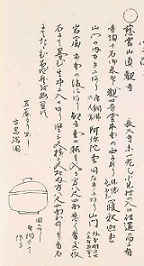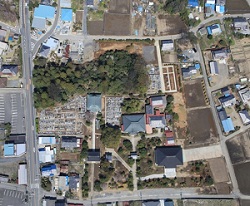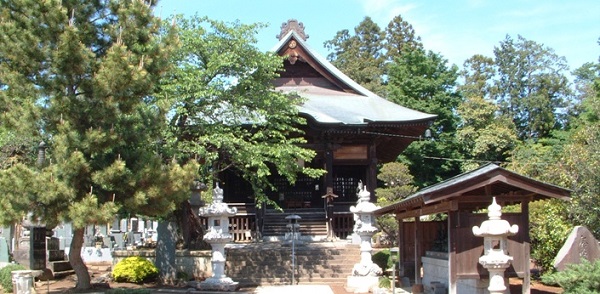The origin and history of the Shinkanji temple
There are some stories about the beginning of the Shinkanji temple. According to the book “Omigo Shinkanji Engi”, the great general Sakanoue No Tamuramaro established this temple. He was a military officer in the Heian period*. “Omigo Shinkanji Engi” was written in 1751 ( Edo period* ) by Syukyo, who was the 22nd chief priest of this temple. There is another story saying that a famous busshia) Kuratsukuri No Tori b) visited this place by the order of Prince Shoutoku. At that time he had a spiritual vision in this place. So he carved the sculpture of Kannon statue by himself and established this temple. The Shinkanji temple has had repeated decline and prosperity in its long history. It was written in many documents that Ryuken Ajari, a high buddist priest in the Kamakura period*, retrieved the Shinkanji Temple. Ryuken Ajari passed away in 1242 ( Heian period* ). There is his Kuyo-to ( memorial tower ) in the grave of all generation chief priests. This Kuyo-to is the oldest itahi ( board monument ) in Saitama prefecture and it was made of Chlorite-schist from the upper reaches of the Arakawa river.
The precincts of the temple
main gate

- At the entrance there are two Nio statues ( Deva kings ) on the east and west sides of the main gate.
It is drawn on the book “Zouho Oshi Meisho Zue” that this main gate was built in 1739 ( Edo period* ).
“Zouho Oshi Meisho Zue” was a guide book of the Gyoda area. It was based on “Oshi Meisho Zue” that was written in 1825 ( Edo period* ).
According to “Zouho Oshi Meisho Zue” Shaka-do hall was in front of the left hand of the Kanon-do hall and Amida-do hall was in the right hand. But both buildings don’t exist today.
After you pass this main gate, you can see the Kanon-do hall. This building was built in 1712 ( Edo period* ).
Kannon-do hall

- In the Kannon-do hall there are some large wooden ‘ema’ (votive tablets) with a horse decorated on them and a doll of a horse. Long ago people dedicated them to pray for horses’ safety, because horses were considered as vehicles, partners of the farming and precious property. You can find the main hall of this temple when you turn right in front of the Kanon-do hall. This main hall was built as an alternative buddist room of Oshi Castle and was moved to the Shinkanji temple in 1634 ( Edo period* ).
The wooden statue of Kannon

- The wooden Kannon statue is housed within the black lacquered zushi ( miniature shrine ). This Kannon statue is only unveiled once every 12 years in the horse year. According to one episode, it is said that somebody got some disasters when they unveiled this statue without getting the permission by the Goma ceremony).
The other cultural properties
The wooden seated statue of Amida Nyorai(Amitabha Tathagata)

- This statue is housed as the principal image in the reception hall. It seated on the side of the principal image of the main hall, after that it was moved to the reception hall when the hall was completed in 2007 (Heisei period*). This statue is thought as the principal image of the Amida-do hall. This Amida-do hall doesn’t exist now, but we can know about this hall in the picture of “Zouho Oshi Meisho Zue”. The Amida-do hall was drawn in the right side of kannon-do hall.
The antiquity

- The antiquities were made of copper-zinc-tin alloy. It is said that those were excavated from the mounded tomb in the precincts of this temple. There is one sentence with a picture in the book “Zouho Oshi Meisho Zue”. The sentence says “The antiquities which came out from the cave in this picture, were made from tang copper.” Of course those antiquities and the ancient tomb were of different periods. So it is thought that someone brought them to the cave of the ancient tomb later.
Omi Shinkanji Kohun (The ancient burial mound)

- There is an ancient burial mound in the north side of the Shinkanji temple. This mound was built in the 7th century (Asuka period*). The shape is called “Zenpou kouen hun” that means a square front and a round back. It looks like a keyhole. This mound has two stone hats. Many ancient relics were discovered from there.








